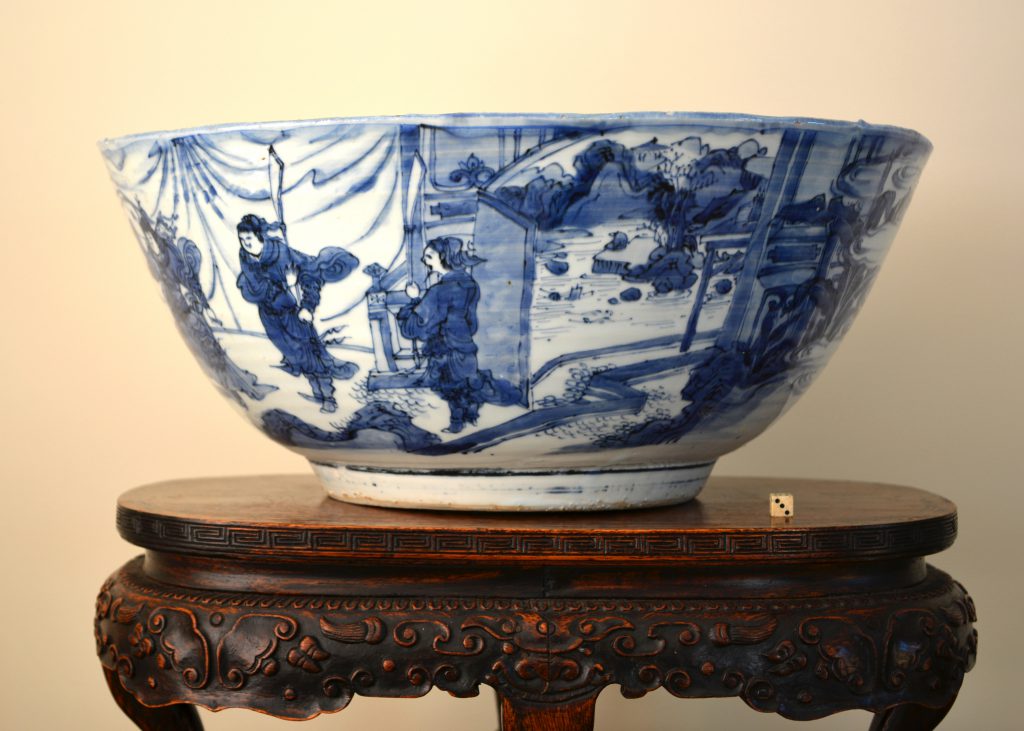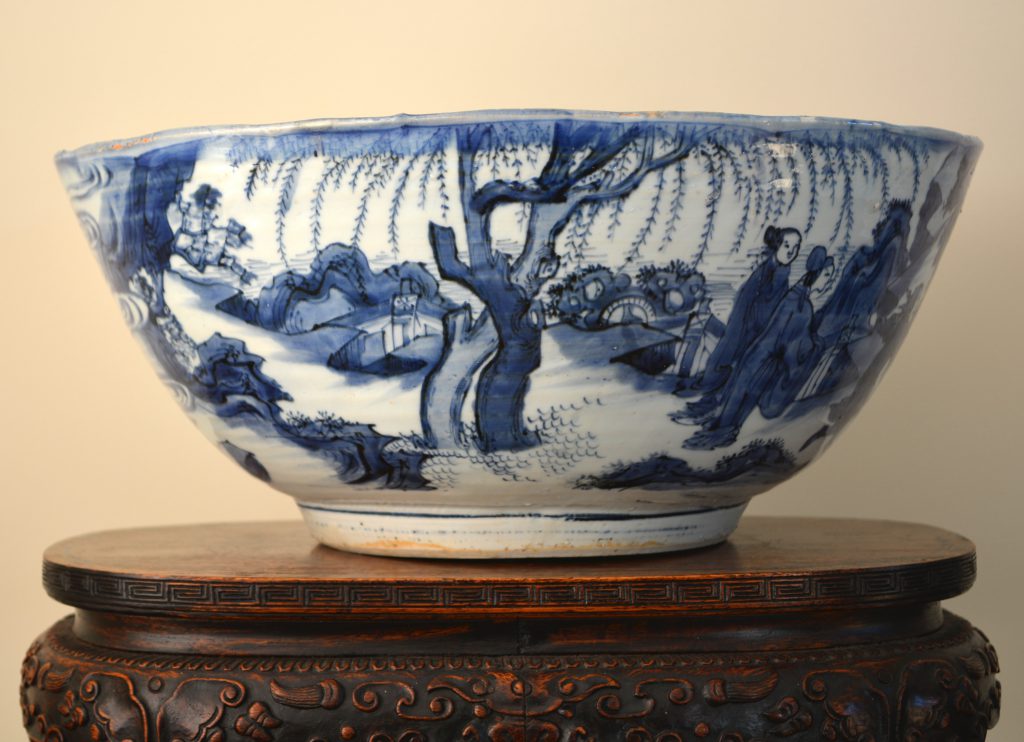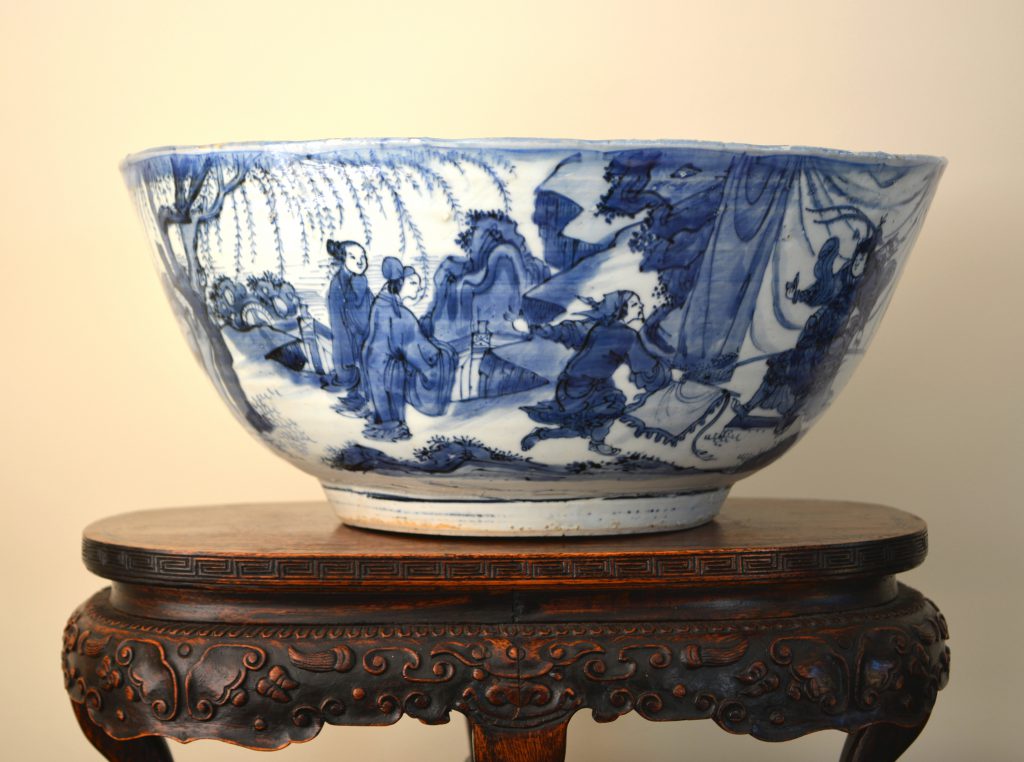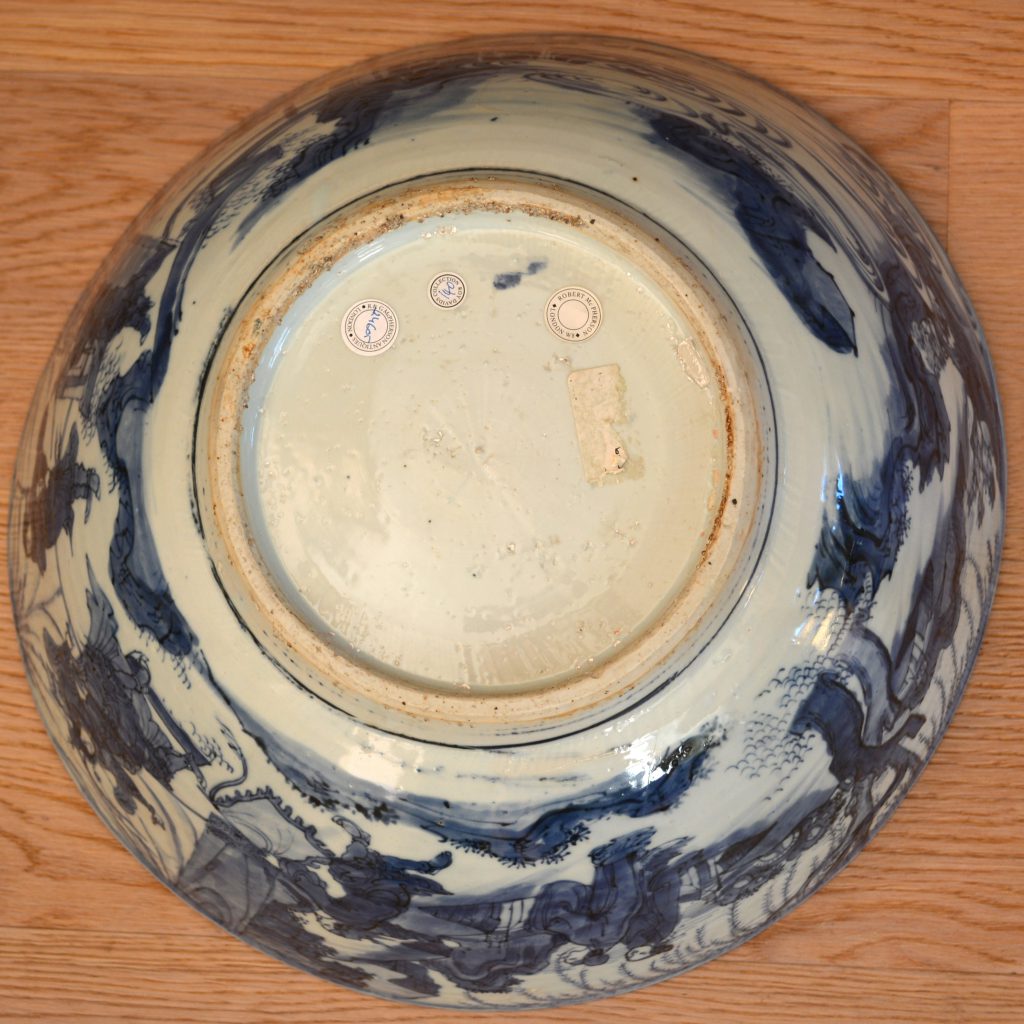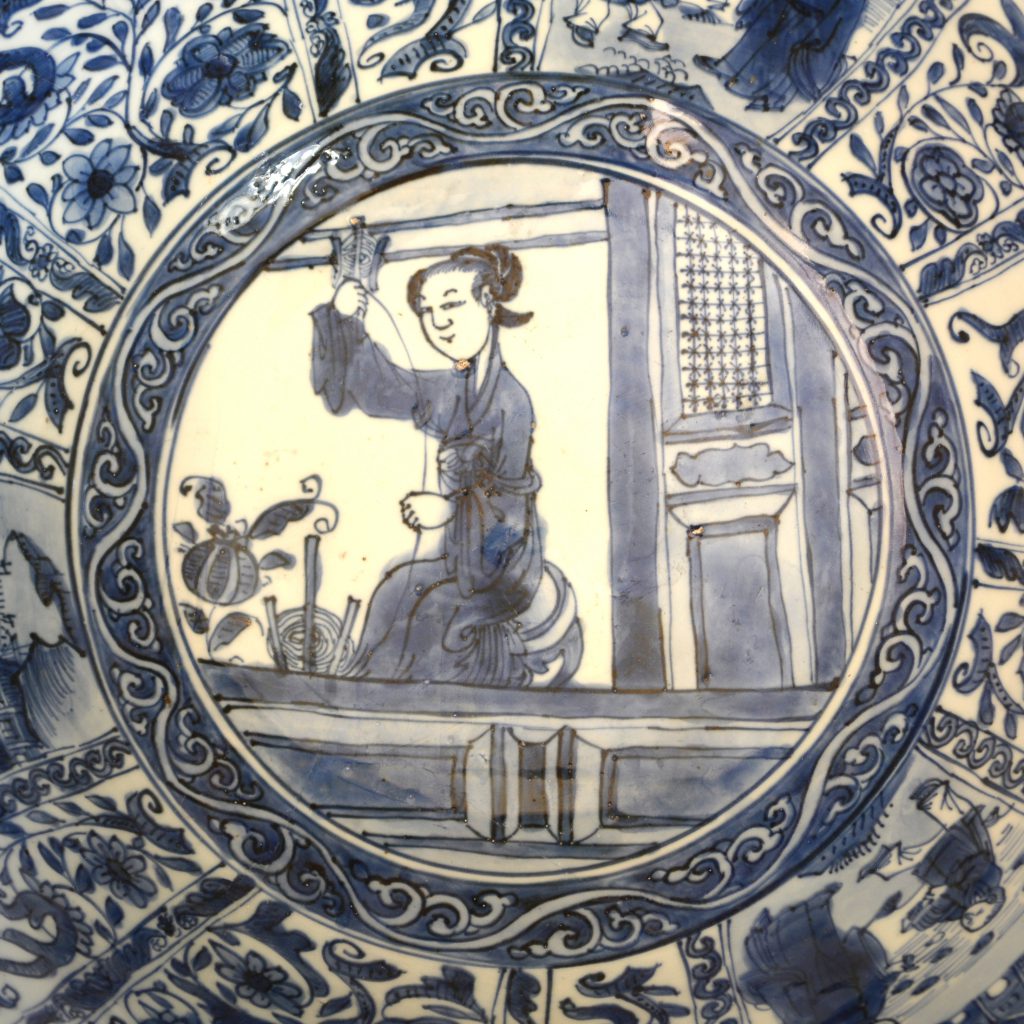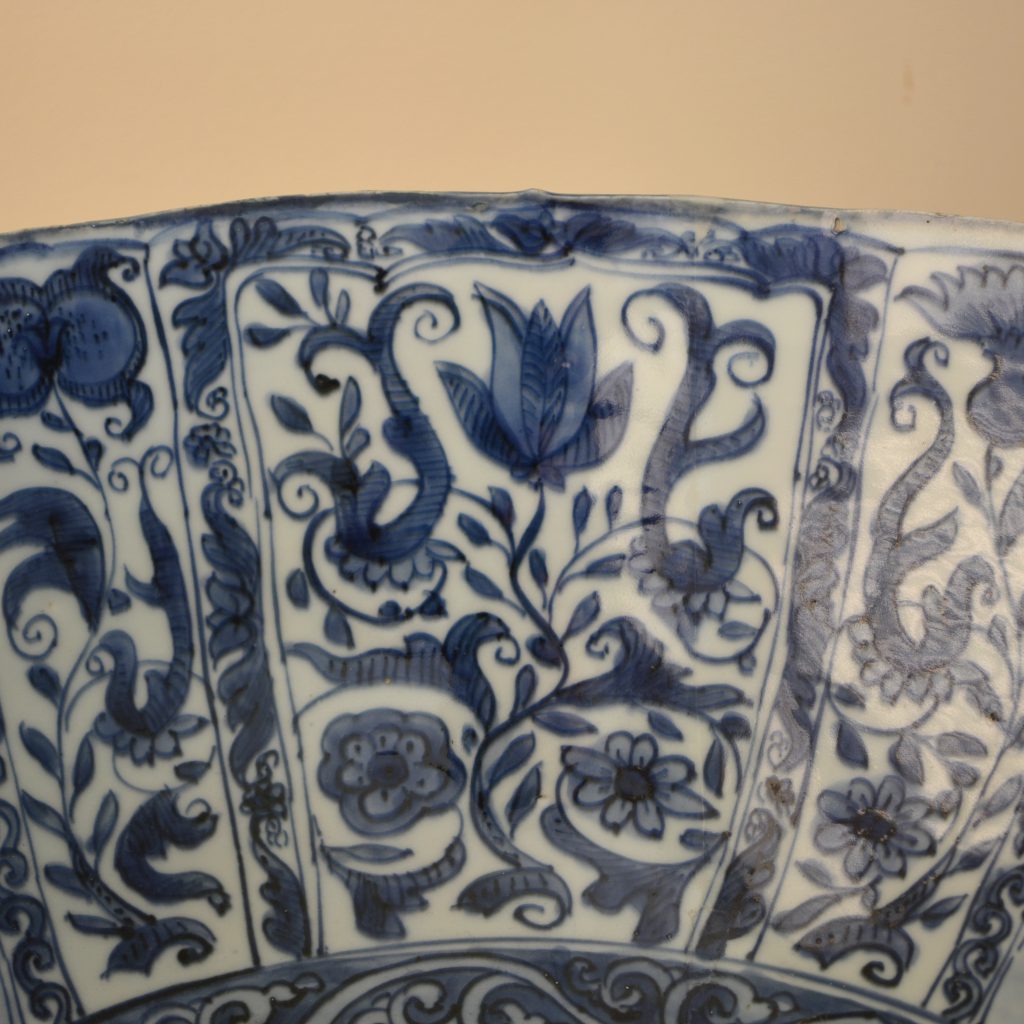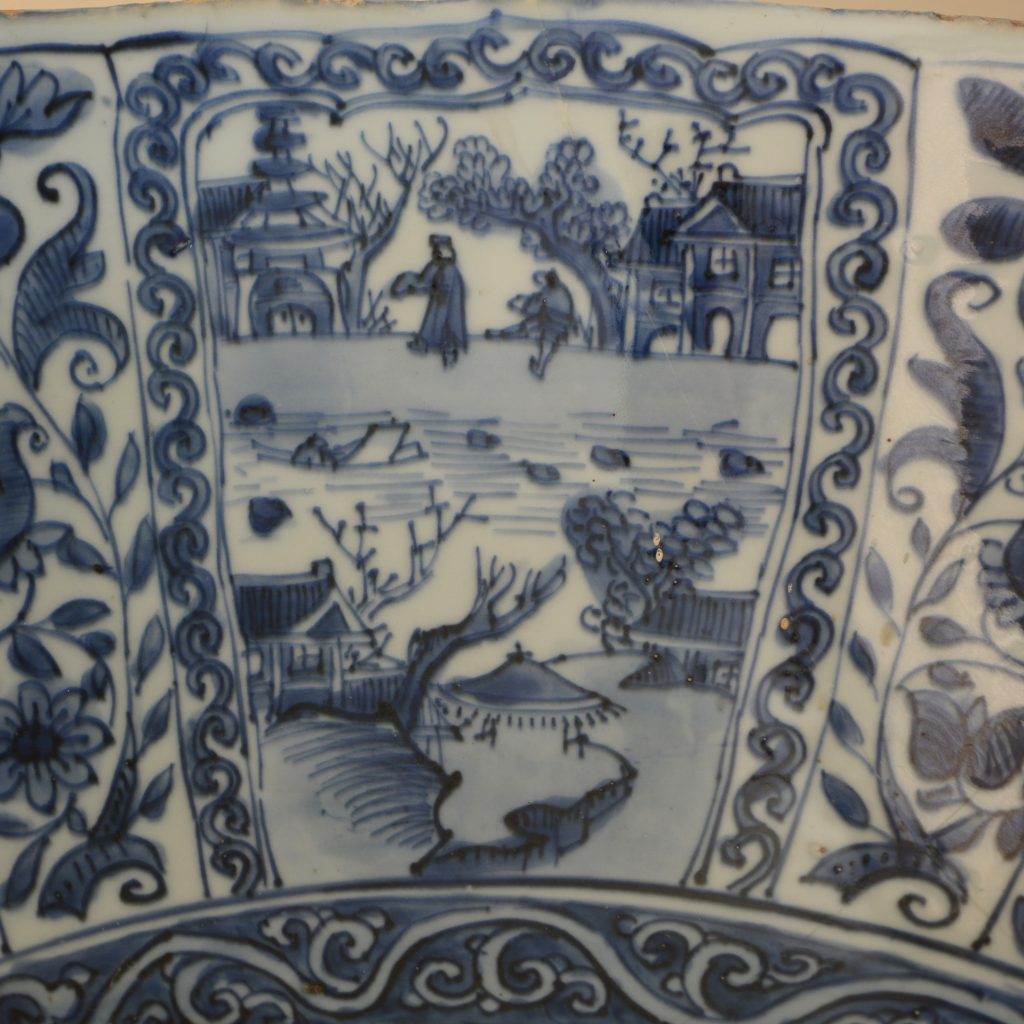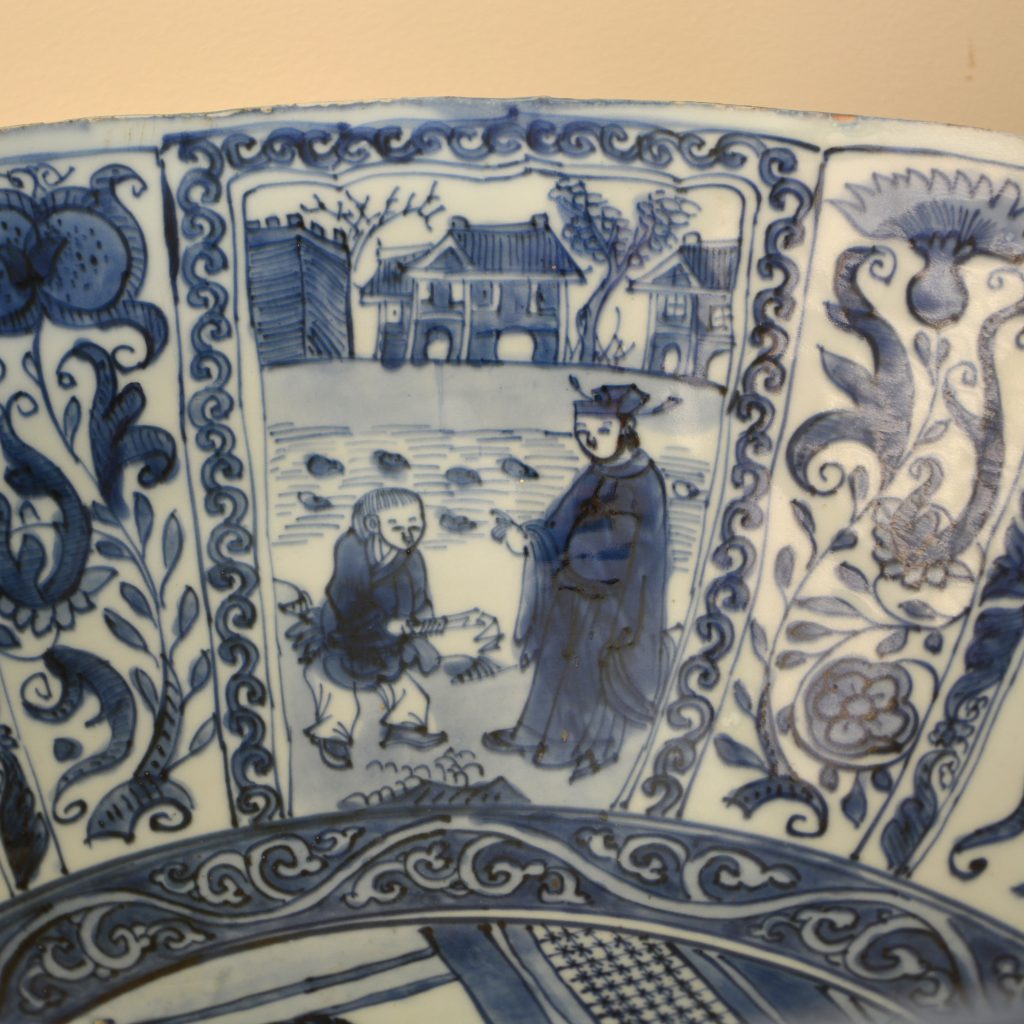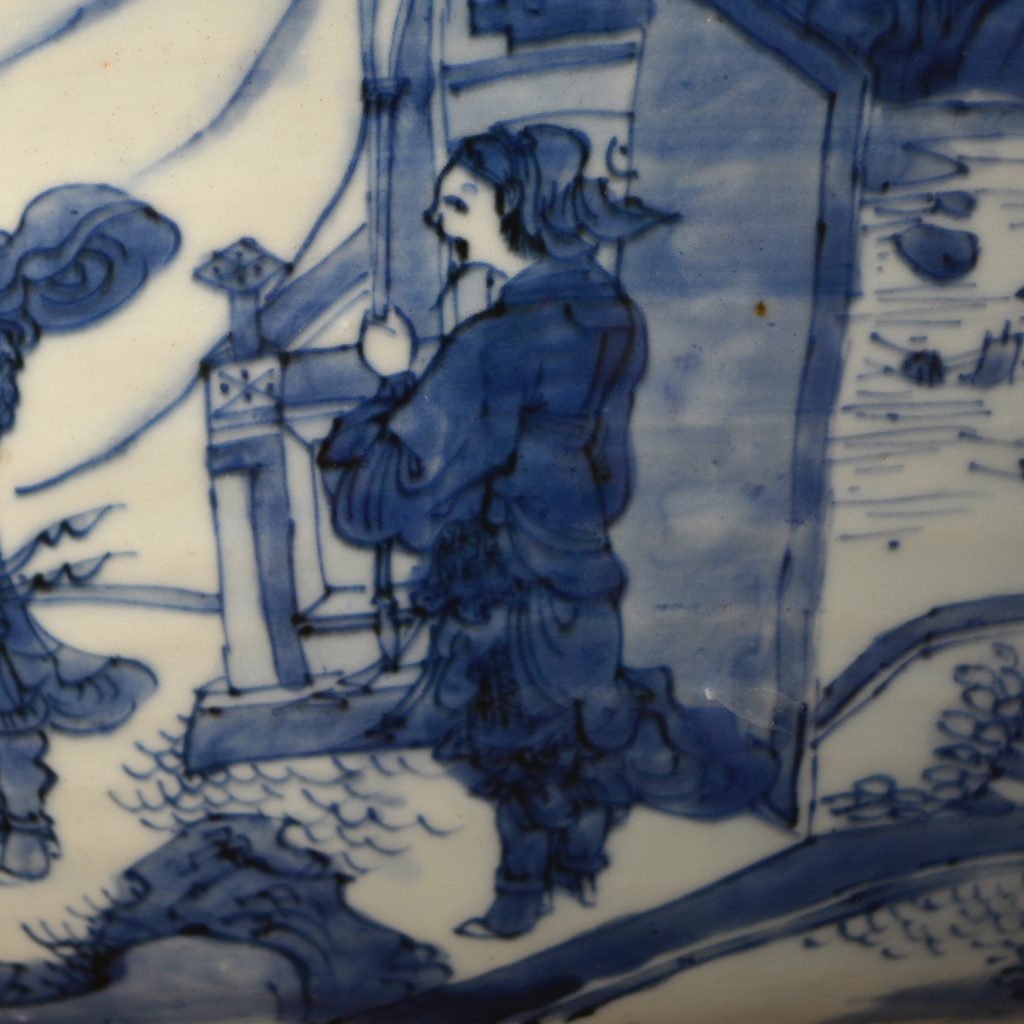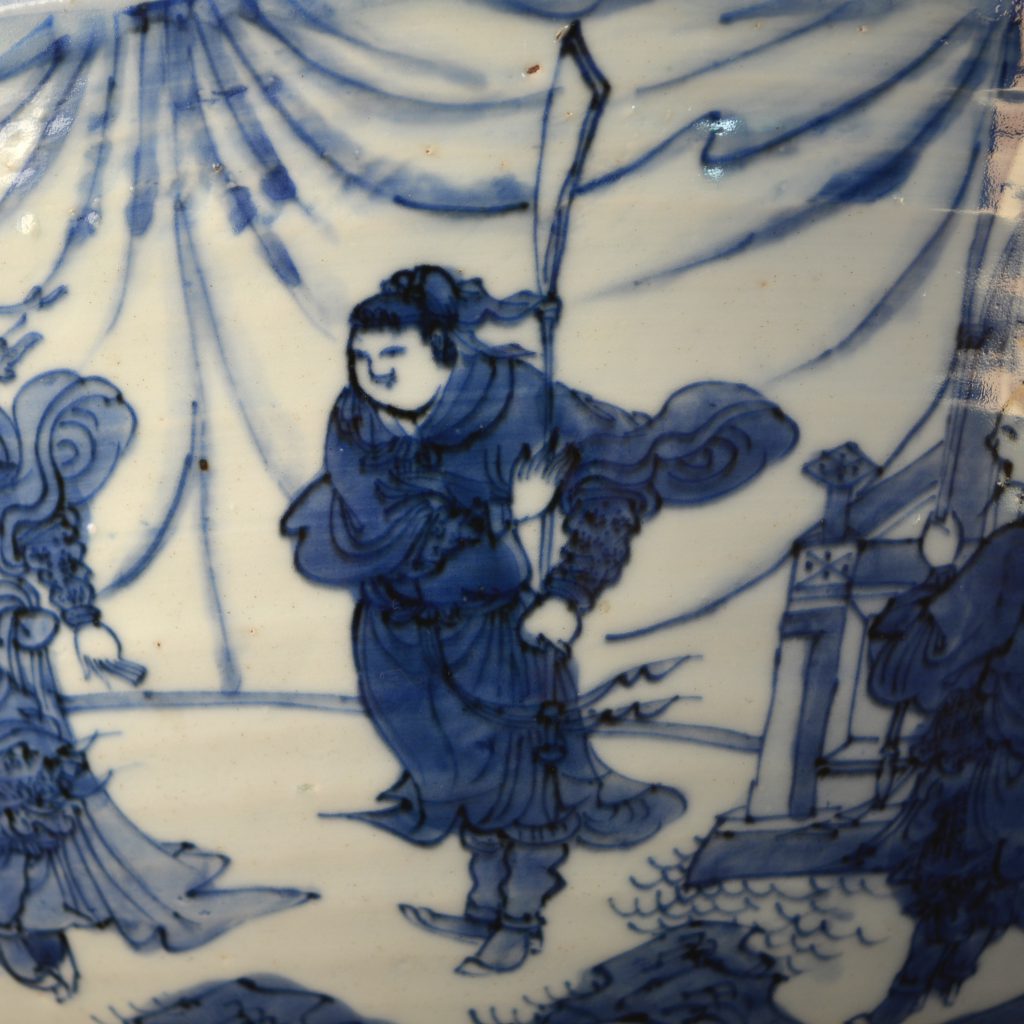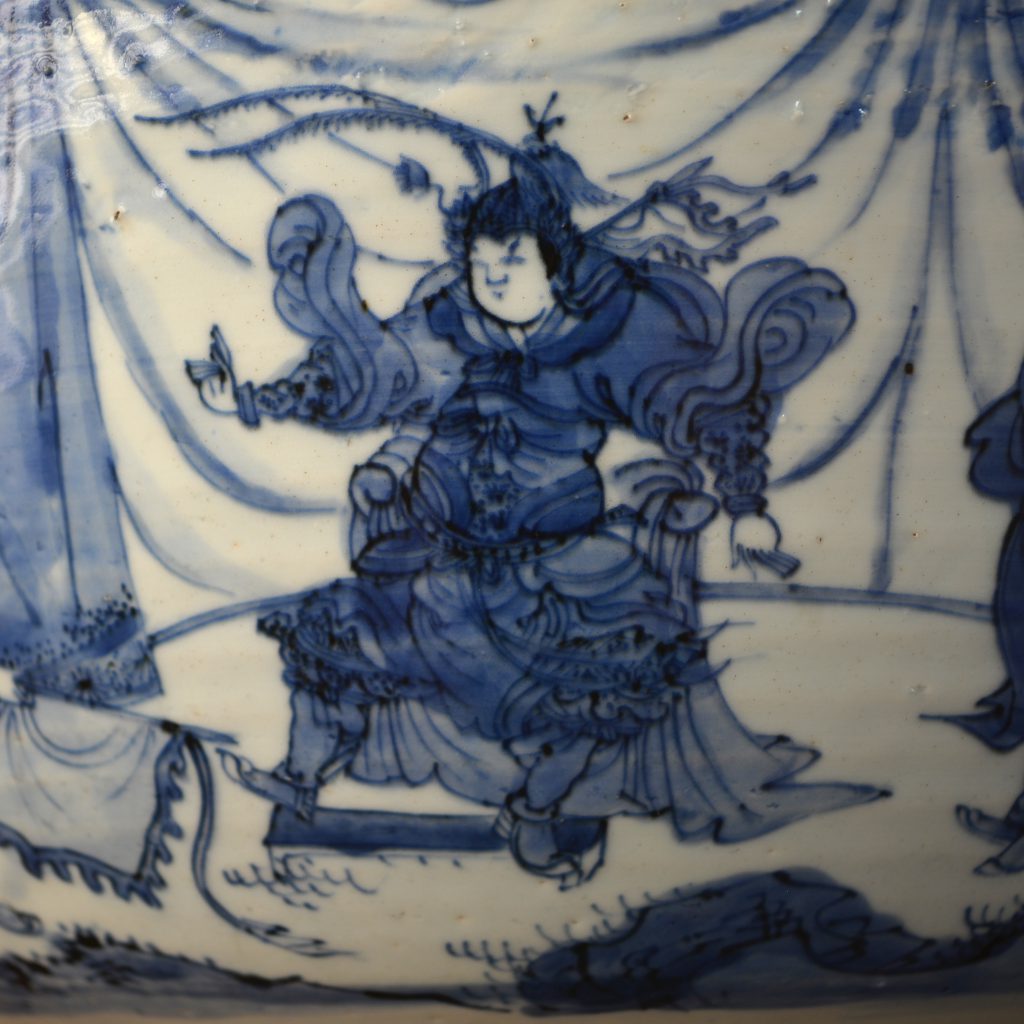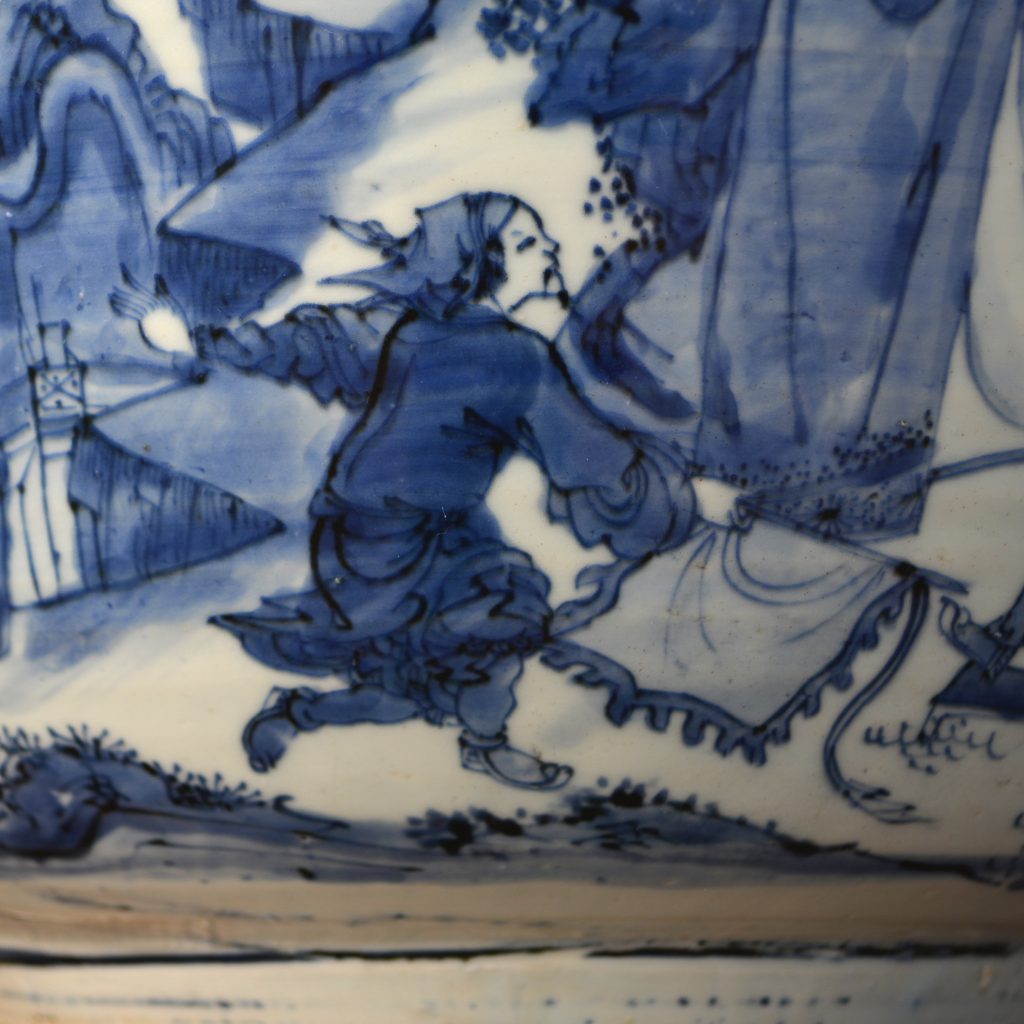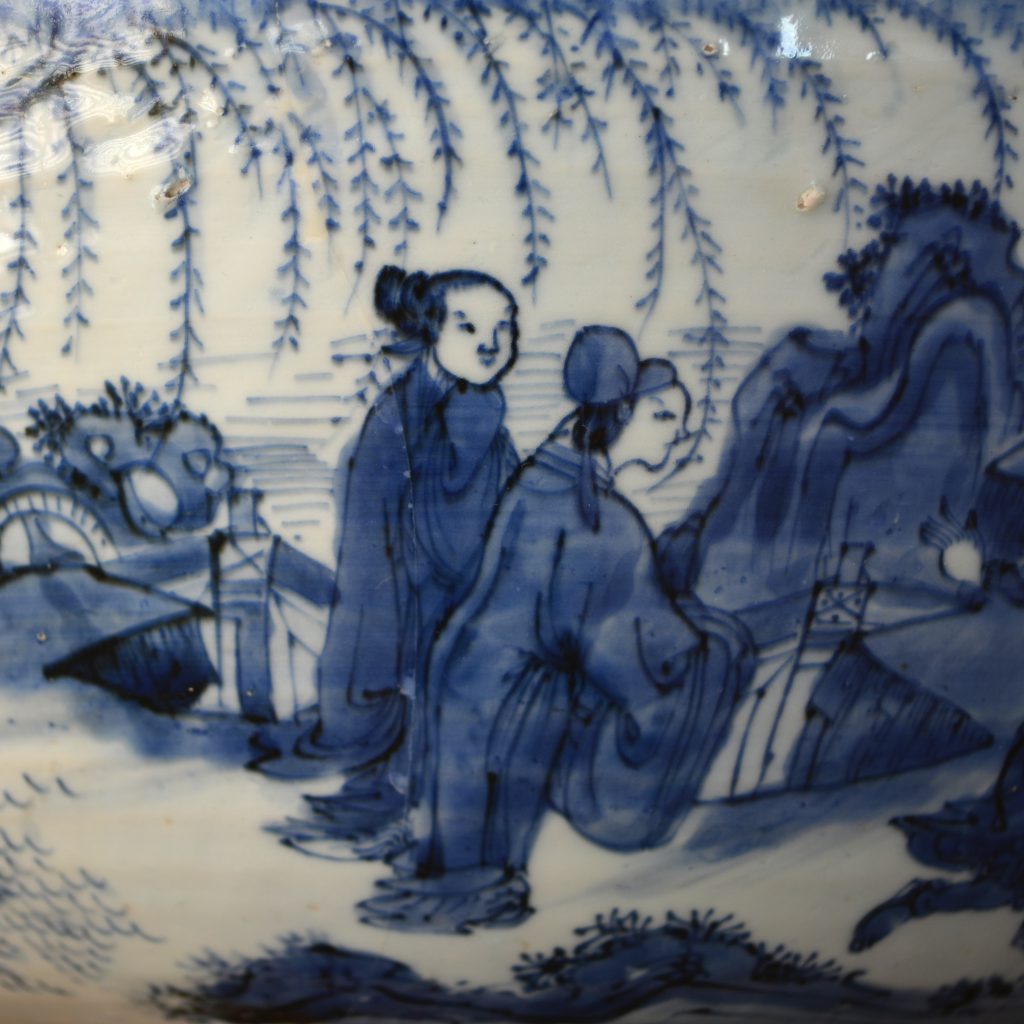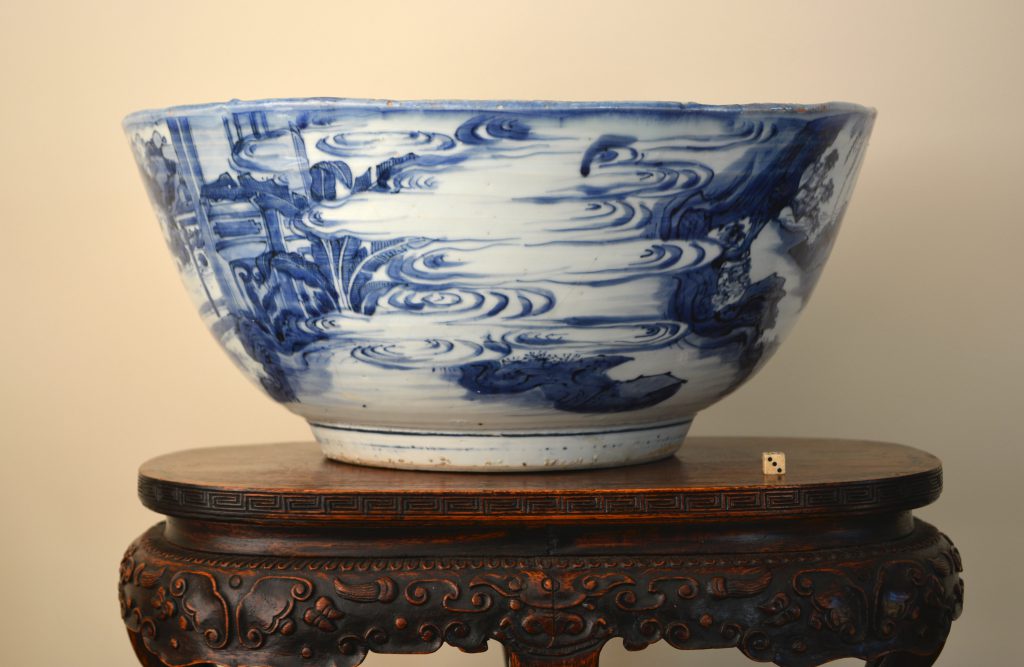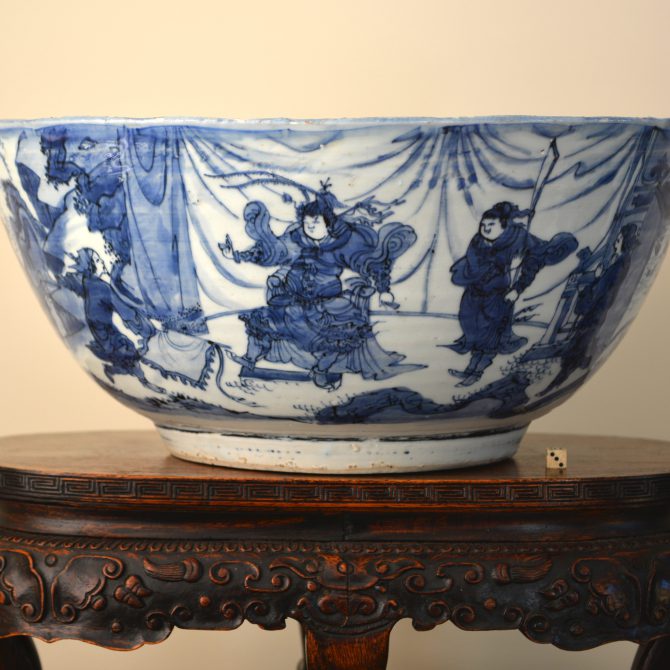
TRANSITIONAL KRAAK BOWL 1628-1644
A very large rare Ming Kraakporcelain bowl, Chongzhen period 1628-1644. The exterior is not in the Kraak style but is more Chinese, with a scene taken from a popular Chinese legend or story with a warrior leader with a temporary loose material screen behind him and other figures as well as an extensive landscape. The interior of this deep bowl is typical of late Karaakware with its panels of landscapes with figures and rather European looking buildings. The well of the bowl is decorated with a lady spooling silk, sometimes referred to as the ‘spinning’ design. This unusual domestic scene is found on a number of bowls of this type but was is rare about this bowl is the contrast between the Kraak interior and the ‘Transitional’ style of the exterior. The quality of painting, with it’s rather loose free brushwork, is reminiscent of Transitional porcelain made for the Japanese market. Indeed I think it is highly likely that many of the workshops in Jingdezhen produced Kraakware as well as porcelain for the Japanese market. However the present example is very much in Dutch taste.
SOLD
- Condition
- Four large sections from the rim restuck. Small chips filled.
- Size
- Width : 36 cm (14 inches)
- Provenance
- Amsterdam (Christie's or Sotheby's) R&G McPherson Antiques The Roy Davids Collection of Chinese Ceramics, Purchased June 1st 2002. Collection label to the base no. 140.
- Stock number
- 24605
- References
- For three bowls in this late Kraak style that incorporate transitional porcelain elements see : Kraak Porcelain, A Moment in the History of Trade (Maura Rinaldi, Bamboo Publishing,1989) Pages 163 - 164 Plates 202 - 204. Plate 202 includes the 'spinner' design, but none have a continuous to the exterior. Dated c.1635-1650. For another large Kraakware bowl of this type with a 'spinning' scene to the well but again without the rare continuous scene to the interior see : Kraak Porcelain, The Rise of Global Trade in the Late 16th Century and Early 17th Century (Jorge Welsh Book, London. 2008. ISBN 0-9550992-9-3) page 314, plate 59. Dated 1628-1644. A further Ming porcelain bowl of this type is illustrated in : Chinese Porcelain in the Collection of the Rijksmuseum Amsterdam, The Ming and Qing Dynasties (Christiaan Jorg, Phillip Wilson, The Rijksmuseum, 1997) page 64, plate 48.
Information
The tulips might have been derived from European engraving, the houses are also rather un-Chinese which contrasts with the Chinese domestic scene of a woman spooling silk.
Kraak Ware / Kraak Porcelain :
Kraak Porcelain is a Type of Chinese Export Porcelain Produced from the Wanli period (1573-1620) until the end of the Ming Dynasty in the 1640`s. Kraak ware or Kraak porcelain was the first Chinese Export Ware to arrive in Europe in large quantities. Its name does not, as had been previously thought derived from the name of Portuguese trading ships, it is possible its name derived from Irish ships called Curachs. These trading ships worked between Ireland and England, they were know to the Dutch traders who used a similar word, craquen, to describe Portuguese trading ships. However in the 16th and early 17th centuries the word Kraak was not used in the V.O.C. record or inventories to describe porcelain. The first known time Kraak was first used as a term to describe a type of late Ming blue and white porcelain was in 1673. This was over 100 years after what we now know as Kraak porcelain was first produced, however there is some evidence that it was a term that had been in use for some time. Blue and white porcelain was exported to Europe in large quantities from the mid 16th century. It was highly prized and the Portuguese fort hard against the Dutch to keep control of this lucrative trade, but in 1602 the Dutch sold the cargo they captured from the Portuguese Carrack `San Tiago` and two years later they sold the cargo of the `Santa Catarina`. These ships caused a sensation, it was the first time such large amounts of Chinese blue and white porcelain had been avalible in Northern Europe, many of the pieces were `gifts` rather than to be sold on the open market . All Kraak porcelain was made at the main ceramic centre in China, Jingdezhen. It does vary in style and quality to quite a large extent, and some scholars include pieces as kraakware that others do not, so a definitive description is, I feel, rather difficult. The main group of kraak porcelain is less controversial. Normally thinly potted, often moulded, it`s designs are divided into decorative panels, with reserves that might include flowers and animals, taotie masks and stylised tulips. The bases often show `Chatter Marks`. These are ridges, that radiate from the centre of the base to the foot rim, they are caused by the potters finishing tool catching on the leather hard clay prior to glazing. When one looks at the construction, painting techniques and glazing of kraak porcelain it appears similar in many ways to some of the late Ming porcelain made for the Japanese market. I think it is quite possible that they were both made within the same kilns at Jingdezhen. Kraak porcelain also includes a few rare pieces that have the addition of underglaze copper red and there are a very few know examples of polychrome kraakware. Kraak porcelain went out of fashion at the end of the Ming Dynasty but was later revived during the reign of Kangxi (1662-1722). Swatow porcelain (c.1580-1640) was made in the kraak style but this is thicker and much cruder, the bases often show grit adhering.
